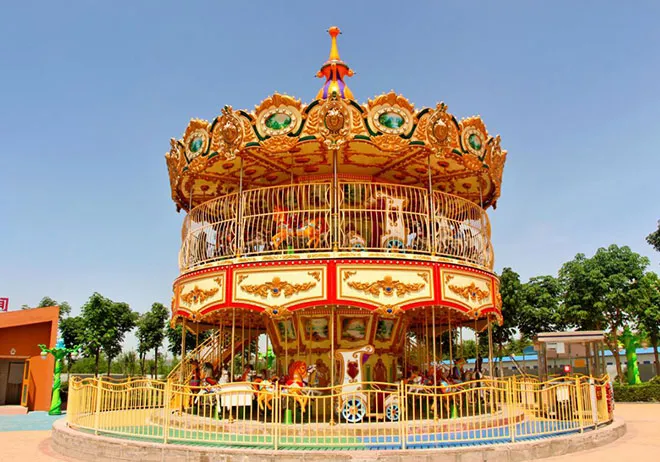- Albanian
- Arabic
- Belarusian
- Bengali
- Czech
- English
- French
- German
- Hebrew
- Hungarian
- Indonesian
- irish
- Italian
- Japanese
- kazakh
- Persian
- Russian
- Thai
- Uzbek
- Vietnamese
Exploring Different Styles of Roller Coaster Experiences and Their Unique Thrills
The Exciting World of Roller Coaster Rides
Roller coasters have long been a staple of amusement parks around the globe, captivating thrill-seekers with their exhilarating speed, breathtaking drops, and intricate designs. As technology has advanced, the types of roller coasters available to riders have diversified significantly. In this article, we will explore several popular types of roller coaster rides, each offering a unique experience and catering to varying levels of thrill.
1. Steel Roller Coasters
Steel roller coasters are arguably the most common type found in modern amusement parks. Known for their smooth rides and versatility, they can accommodate a variety of designs and features. Steel coasters are capable of executing rapid twists, turns, and inversions, making them a favorite among thrill-seekers. One notable example is the Steel Vengeance at Cedar Point in Ohio, which boasts steep drops and multiple inversions, delivering an unforgettable experience.
2. Wooden Roller Coasters
In contrast to their steel counterparts, wooden roller coasters have a nostalgic charm and are characterized by their classic wooden structures. These coasters often deliver a more rugged and bumpy ride compared to steel coasters, which some enthusiasts cherish for the thrill of an authentic experience. Iconic wooden coasters like the Shivering Timbers at Michigan's Adventure combine steep drops with a rattling charm, recalling a golden age of amusement parks.
Inverted roller coasters flip the traditional design on its head—literally. Riders sit underneath the track, allowing for unique sensations and a feeling of weightlessness during inversions and drops. The Banshee, located at Kings Island, is one of the longest inverted coasters in the world, featuring a series of loops that keep riders on an adrenaline high from start to finish.
types of roller coaster rides

4. Suspended Roller Coasters
Suspended roller coasters offer a distinct twist to the traditional ride experience. Here, the cars hang from the track, providing a sense of freedom as they swing from side to side during the ride. This design allows for thrilling drops and turns that give the impression of flight. A popular example is the Batman The Ride, which provides sharp twists and turns, keeping riders both exhilarated and captivated.
5. Launch Coasters
Instead of the traditional lift hill, launch coasters use powerful mechanisms to propel the train forward at high speeds. This type of coaster offers an immediate adrenaline rush without the build-up of a slow ascent. One of the most famous launch coasters is “Kingda Ka” at Six Flags Great Adventure, which launches riders from 0 to 128 mph in a mere few seconds, pushing the boundaries of speed and thrill.
6. Dive Coasters
Dive coasters offer a unique experience by featuring a vertical drop that creates an exhilarating sensation of free-fall. These rides often include a hold at the top, allowing riders to anticipate the thrilling plunge. “Falcon’s Fury” at Busch Gardens Tampa is a prime example, dropping riders from a height of 335 feet straight down, offering breathtaking views and heart-pounding excitement.
Conclusion
The world of roller coaster rides is vast and diverse, offering something for everyone—from the heart-pounding experiences of steel coasters to the nostalgic charm of wooden ones. As amusement parks continue to innovate and design new experiences, thrill-seekers eagerly anticipate the next wave of attractions that push the limits of what roller coasters can achieve. Whether you are an adrenaline junkie or someone seeking a fun day out, roller coasters remain an integral part of the amusement park experience, promising excitement and adventure at every turn.
-
Flume Ride-Hebei Zhipao Amusement Equipment Manufacturing Co., Ltd.|Thrilling Water Attraction&Customizable DesignJul.30,2025
-
Flume Ride - Hebei Zhipao Amusement Equipment | Water Coaster, Thrilling DescentJul.30,2025
-
Flume Ride - Hebei Zhipao | Thrilling Water AttractionJul.30,2025
-
Flume Ride: Thrilling Water Attraction by Hebei Zhipao|Log Flume Manufacturers&Flume Ride DesignJul.30,2025
-
Flume Ride-Hebei Zhipao Amusement Equipment Manufacturing Co., Ltd.|Thrilling Water Coaster, Safe DesignJul.30,2025
-
Flume Ride-Hebei Zhipao Amusement Equipment Manufacturing Co., Ltd.|Thrilling Water Attraction, Safe DesignJul.30,2025
